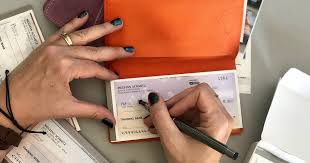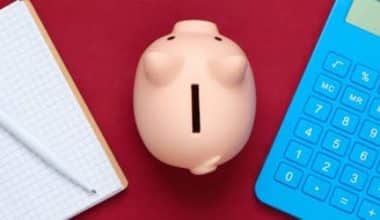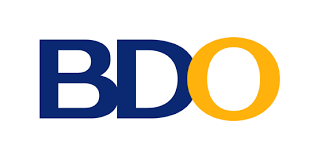A checkbook, a small, rectangular paper pad, is given to you when you create a checking account. Each checkbook page features a pre-printed check for purchases and bill payments. Knowing the pros and cons of checkbooks may help you manage your checking account expenditures. Checkbook, register, and use are explained below.
CheckBook
Checkbooks are little books or folders with preprinted paper instruments that checking account holders use to pay for goods and services. Account holders can utilize checkbooks to exchange ordered checks. Usually, the account holder’s name, address, and other information are printed on the checks. Each check will also have a check number, an account number, and the routing number of the bank.
Checks are rarely used anymore, but you may need one. Your apartment landlord may not accept credit or debit cards. Your bank confirms that your check was cash, which is essential since not all landlords are meticulous or tidy when cashing checks.
How a CheckBook Works
Checkbooks include checks that can be used to buy things, pay bills, and more. Online banking and shopping have reduced the need for paper checkbooks.
When it comes to you, the checks in your checkbook function similarly to cash.Fill out a check with transactional information, rip it along the perforated line, then give or mail it to the recipient. Write the transaction details in the checkbook register to keep track of the money transfer.
You’ll see many columns when you input the transaction in the register: the check number, date, transaction description, payment amount, deposit amount, and the account balance following your transaction.
You may quickly determine how much money is available in your account by entering deposit or payment amounts into the register, adding or subtracting them from your balance, and then adding or subtracting those amounts from your balance. The processing and clearing of checks, however, can take many days, or the recipient can choose to delay cashing them. If that’s the case, the amount you actually have available may not match what’s in your bank account.
Once the check has been deposited, the banks work together to transfer the money to the recipient’s account. You can confirm that your checkbook entries and account balance match by using your bank statement, checkbook register, and check carbon copies at the end of the month—or more regularly.
Example of a Checkbook
In order to open a checking account, Bob went to his neighborhood bank. He opened the account with a $3,000 initial deposit. Bob received 100 checks in his checkbook to pay vendors with account funds. When Bob fills in the payee’s details, the check must be deposited into their bank account. The receiving bank will verify funds with Bob’s bank before clearing the check. After then, Bob’s bank account will transfer money to the payee. Bob can then record the price he paid on the register and balance his checkbook by subtracting the price from his bank account.
Pros and Cons of a Checkbook
Below are the pros and cons of checkbooks:
Pros
- safer compared to carrying cash Currency is readily misplaced, lost, or stolen, but when you write a check from your checkbook, only the recipient can cash it.
- It aids in keeping track of your spending: You may keep a better watch on the balance of your bank account by listing your transactions in your checkbook register as opposed to doing them electronically.
- Handy in cases where credit or debit cards are not accepted: If you are unable to use one of your cards, the ability to pay with or make purchases using your checkbook is a significant benefit.
- Checks serve as payment receipts: Cash is not tradable, but checks are.
Cons
- Certain checks may not cash right away: Most paper checks are electronically, and the procedure is fairly quick. Unfortunately, not all people who receive checks deposit them the day after or the week after they get them, so your account may appear to have more money in it than you actually have access to.
- Budgeting mistakes might lead to bounced checks: If your bank account doesn’t have enough money to cover your checks, you risk writing a “undeliverable check” and paying extra.
- Without your consent: Checkbooks can be stolen or lost, allowing unlawful withdrawals.
How to Balance a Checkbook
After receiving your monthly paper bank statement, you had to balance your checkbook. Then you can compare your handwritten checkbook register transactions to the statement.
Notwithstanding changes since our parents’ time, the profession’s principles remain the same. Record all transactions, starting with your bank balance, to balance your checkbook for the first time.
Your checking account’s “current available balance” is named. Bank apps and websites provide this info. In a paper checkbook register, write this number above the transaction fields.
Track pending transactions. This includes debits, credits, and uncashed cheques. Record the transaction’s date, brief description, and check number if applicable.
Calculate any fees or interest you paid or received.
Track your debits, credits, and balance in your check register.
Compare your records with your bank’s total withdrawals and deposits at least every two weeks. Balanced checkbook.
What if your numbers don’t match the bank’s? To find the discrepancy, check your and the bank’s transaction history. You may have mistyped numbers or missed a transaction. Finding the issue requires going back to when your checkbook was last balanced and proceeding forward.
Balancing your checkbook more often than once a month, especially if you’re just started, has many benefits. Balance weekly or twice a month to reduce transactions.
Check Book Register
Any check and cash transactions your business does during an accounting period should be recorded in a checkbook register, also known as a cash disbursement diary. To determine the current balance of their checking account, businesses utilize a check register.
Depending on the needs and preferences of your business, you may have a separate business checkbook register for each checking account. For example, you may have separate check registers for your payroll account and your operating account.
A cash disbursement journal’s columns can often help you organize and categorize transaction data. Generally, a checkbook register will have the following components:
- Date of the deal
- Verify the category or number (e.g., electric bill)
- Notes or descriptions
- related debits and credits for the transaction
- Invoice total
- The advantages of keeping a check register
Your accounting procedure should include a check register. Your register tells you what kinds of things your business buys and can help you make changes to your spending if you need to.
Checkbook registers, as opposed to online bank statements, provide you with a real-time record of your account balance and the amount of cash you have on hand.
The use of a checkbook register is quite advantageous for small businesses. Your benefit from it is that:
- Don’t spend excessively.
- Spend less.
- Keep your transactions updated and structured.
- Look for a precise balance
- Keep an eye on your budget.
- Discover errors (e.g., missing check)
- Balance your bank statements.
Do Banks Still Give Checkbooks?
Yet, if you find yourself short on checks and need a few extra right away before your new ones arrive, you may frequently obtain several fast counterchecks from your bank. Counterchecks may be printed for you by a teller or personal banker.
Are Checkbooks Still Necessary?
Even though many assume paper checks are obsolete, persons over 55 still use them. 15% of non-cash payments were made via check, according to a recent Federal Reserve study. Checks are used for rent and wages.
Do I Need a Checkbook to Write a Check?
Checks must be issued by your bank or credit union in order for you to write a check. Checkbooks are one group of these. Some organizations offer these at no cost, while others could demand a fee.
Is It Cheaper to Order Checks From Your Bank?
It is normally most expensive to order checks through your bank. Depending on the bank and the complexity of the transaction, the price can reach around 30 cents each check. Nonetheless, lots of banks give away free checks to customers. As the financial industry gets more competitive, banks are doing everything they can to get new clients.
How Quickly Can You Get Checks?
It usually takes 10 to 14 business days, depending on whether you order your checks from a bank or a business. Consider speeding up shipping if you are out of checks and require them right now.
Conclusion
Checkbooks contain a set number of numbered checks and a register for recording check information and balancing account statements. Before cashing a check, a consumer must fill out and sign it. The date, person or company, and the amount must be available.
Related Articles
- HOW LONG DO CHECKS LAST?
- WRITING A CHECK: Step-by-Step Guide to Writing a Check
- How To Order Checks Online: 15 Best Places to Personal Checks in 2023
- CUSTOMER PERSONA: Definition, Example & Importance






